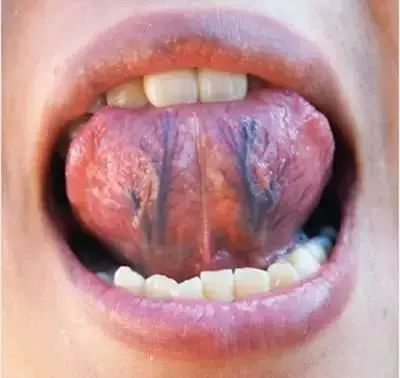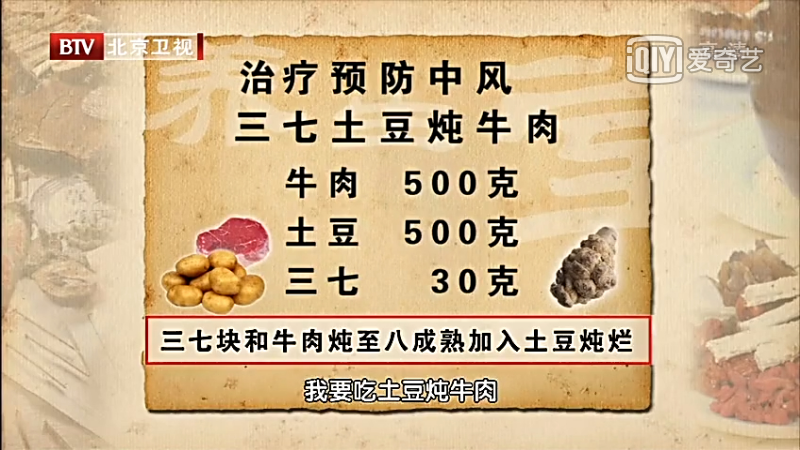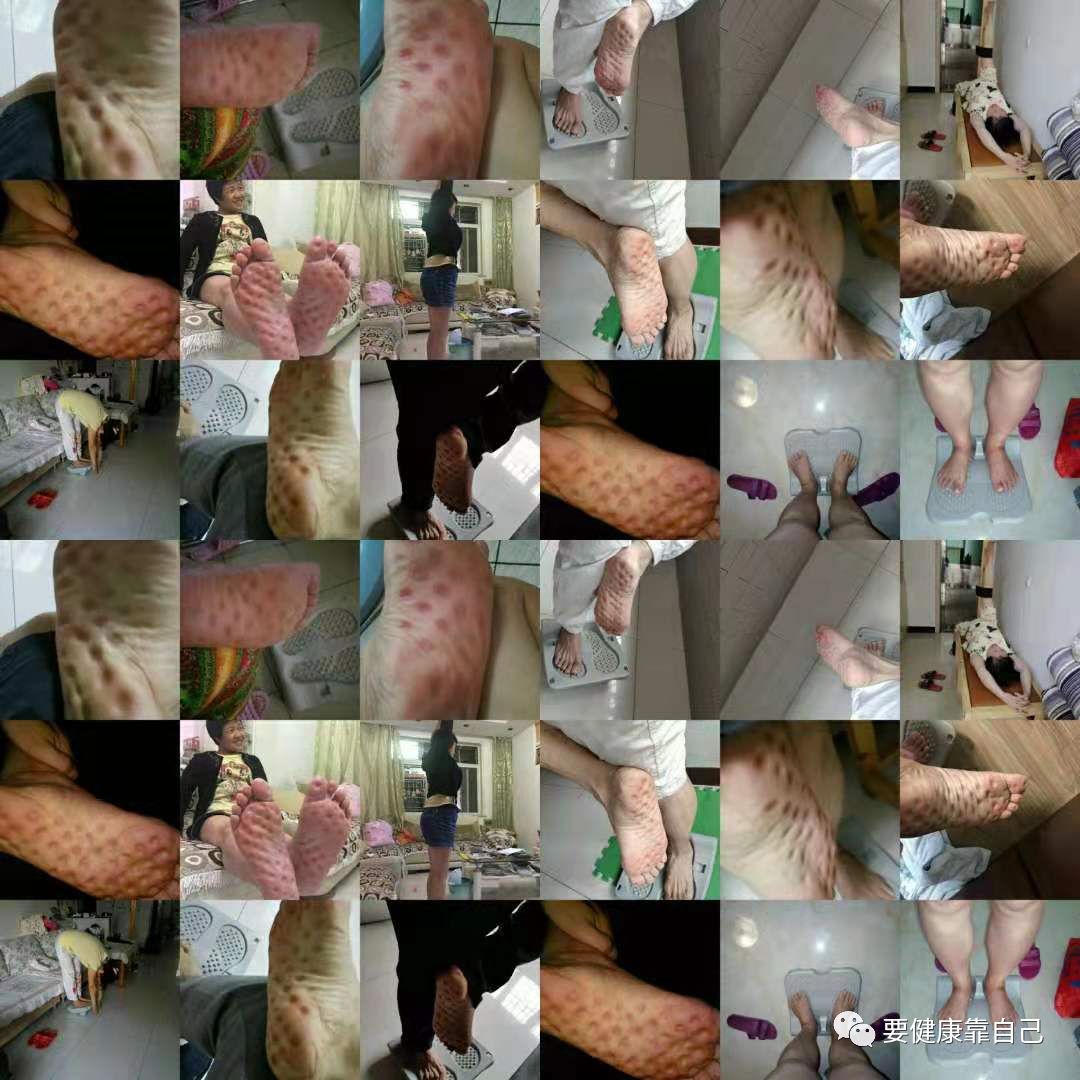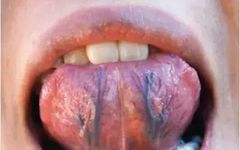Modern blood stasis constitution is very common, affecting our appearance and physical health, and is one of the culprits leading to cardiovascular diseases (such as cerebral infarction, myocardial infarction, hypertension, and hyperlipidemia).
Many practitioners recommend that older individuals consume San Qi (Panax notoginseng) to resolve blood stasis and prevent sudden high-risk situations.
After the age of 35, one may experience dull complexion and hair loss, not only due to the decline of the Yangming meridian but also due to the continuous accumulation of blood stasis. As age increases, Yang energy diminishes, and the ability to promote blood circulation gradually declines, leading to some degree of blood stasis in the body.
By resolving blood stasis, many positive changes can occur in the body.
After resolving blood stasis,
the appearance and body will undergo these changes
1. Complexion becomes bright and rosy, spots fade, lip color turns red, dark circles lighten, and skin becomes moist.
“Jin Gui Yao Lue”: “If there is dry blood inside, the skin will be rough, and the eyes will be dark.”
Blood stasis manifests on the face and skin as: dull and lifeless complexion, dark lip color, spots, heavy dark circles, dry skin resembling fish scales, and increased white flakes in winter.
Individuals with blood stasis are prone to pigmentation, and stasis in small vessels manifests as a dull complexion, similar to skincare products that have oxidized. Antioxidation is not as effective as resolving blood stasis.
When blood stasis is concentrated and severe, it can easily turn into spots, bruises (purple bruises), warts, vitiligo, and purpura.
Therefore, after resolving blood stasis, one will appear more beautiful, and the overall appearance will look clear and radiant. A woman who shines like a light is certainly not prone to blood stasis.
2. Stasis spots on the tongue disappear, sublingual veins become pale, and menstrual blood in women turns bright red.
“If the blood vessels are blue, there is internal blood stasis.” Black spots on the tongue and dark purple or even black coral-like sublingual veins, along with dark menstrual blood with many clots, are important indicators of blood stasis. Black spots on the whites of the eyes also indicate blood stasis.
After resolving blood stasis, the color of the blood changes from dark to red, and the color of the sublingual veins will also lighten.

3. Unexplained body pain disappears.
Pain caused by blood stasis has the following characteristics: fixed location, stabbing pain, dull pain, periodic occurrence, and worsening at night.
Such as pain from old injuries, pain in the joints, periodic headaches, shoulder pain, arm pain, lower back pain, leg pain, and generalized pain. These often occur without exterior symptoms (no abnormal reactions to cold or heat) and without interior symptoms (smooth bowel movements, no bitter mouth or dry throat), nor symptoms of Qi deficiency or phlegm-dampness.
4. Hands and feet become warm, the body feels relaxed, energy increases, sleep improves, memory enhances, and irritability decreases.
Blood stasis may seem insignificant, but it actually consumes the body’s vital energy significantly and insidiously.
Firstly, the blood vessels are obstructed, leading to reduced and slowed Qi and blood supply; secondly, the body mobilizes Qi and blood to resolve the stasis. This obstruction and consumption lead to insufficient Qi and blood in the brain, causing forgetfulness; insufficient Qi and blood in the spleen and stomach muscles lead to Qi deficiency, poor energy, cold sensitivity, or numbness in limbs; insufficient Qi and Yin leads to unblocked meridians, Yang not entering Yin, insomnia, and vivid dreams. Blood stasis and Qi stagnation can easily lead to irritability over trivial matters.
5. No more unexplained sweating, periodic hot flashes, and reduced hair loss.
Blood stasis can also cause spontaneous sweating, localized abnormal sweating, and hot flashes. In such cases, nourishing Yin may not be effective and may even lead to insomnia and vivid dreams. The tongue coating is not yellow, thick, or greasy, and bowel movements are smooth, indicating no interior heat or dampness; thus, it is likely blood stasis.
Hair loss without illness (no sickness, regular diet and lifestyle) is often due to blood stasis, where blood stasis blocks the blood flow, preventing new blood from nourishing the hair.
After reading the above, do you suspect you have a blood stasis constitution?
“Blood Vessel Cleaner” – San Qi
Many masters of traditional Chinese medicine and TCM teachers recommend using San Qi (Panax notoginseng) because it is both a food and a medicine and resolves stasis without harming the vital energy.
San Qi is named for its growth period of three to seven years, with each stem producing three roots and seven leaves (also known as Tian Qi). To summarize the uses of San Qi, four words suffice: “the holy medicine for blood.”
“Ben Cao Gang Mu Shi Yi”:
“Ginseng is the best for Qi, and San Qi is the best for blood. Their tastes are similar, and their effects are equal, hence it is called ginseng San Qi, the most precious of Chinese herbs.”
Here, “nourish” is used in a broad sense of “to support.” San Qi nourishes blood, encompassing invigorating blood, nourishing blood, and stopping bleeding, effectively addressing a series of symptoms related to blood stasis, blood deficiency, and abnormal bleeding!
Invigorating blood and stopping bleeding, in modern terms, is “dual-directional regulation,” which is the miraculous aspect of San Qi. The master of herbal medicine, Zhang Xichun, described it as “as direct as a divine dragon’s transformation, unfathomable.”
San Qi “is good at both invigorating blood and stopping bleeding, which many doubt,” but this is indeed the case. For example, when applying San Qi powder to a wound, “the bleeding stops immediately,” indicating its hemostatic ability; and it is visibly evident that the stasis around the wound “is transformed into yellow fluid by San Qi,” indicating its ability to invigorate blood and resolve stasis. — “Yi Xue Zhong Zhong Can Xi Lu”
In ancient armies, San Qi was often used as a wound medicine, and the famous “Yunnan Baiyao” also uses San Qi as its main ingredient.
Modern pharmacological studies show that the “Sanqi saponins” contained in San Qi can disperse stasis, reduce swelling, significantly dilate coronary arteries, and increase blood flow (“Zhu Liangchun’s Experience in Medication”).
There is a saying about San Qi: raw San Qi is primarily for breaking up stasis, while cooked San Qi is primarily for nourishing blood. Generally, it is advisable for individuals to first resolve stasis before nourishing, starting with raw San Qi.
How to consume raw San Qi?
The conventional method is to powder it, but obtaining high-quality San Qi powder can be problematic.
When powdered, it is difficult to determine whether the raw material is “copper-skinned, iron-boned, and chrysanthemum-hearted”; if the inedible “cut-off” parts are included, or if the powdering process does not meet sterile standards, buyers have no recourse.
Additionally, San Qi has a bitter taste, making it hard to swallow. Long-term consumption can lead to mental resistance.
Actually, consuming San Qi does not have to be so painful. Here is a recipe for San Qi that Master Song Zuomin often consumes:

Mr. Song, at the age of 88, went to the hospital for a vascular check-up. The walls of his carotid arteries showed no stasis spots, appearing as clean as those of a young person, astonishing the doctors performing the angiography.
“Golden Unchangeable” Yunnan Wenshan San Qi
The roots of Wenshan San Qi are denser and more compact, with stable saponin content, referred to by Li Shizhen as “golden unchangeable.”
Precious San Qi has strict requirements for its growing environment; it needs to be moist but not waterlogged, at an altitude of 1000-2000 meters, with an ideal temperature maintained between 18-25 degrees Celsius year-round.
The loose red soil of the Wenshan region in Yunnan just meets these requirements, making it a renowned “hometown of San Qi” across the country.
There is a difficulty in planting San Qi: land that has grown San Qi cannot be replanted for 15-20 years. It must wait until the soil can support San Qi again; otherwise, the plants are prone to disease and may yield no harvest.
Many San Qi plantations rely on fertilizers to maintain growth, resulting in poor quality San Qi, with potential pesticide and heavy metal residues.
Many San Qi products are not sun-dried naturally but are baked. San Qi is originally warm in nature, and baking increases its heat, making it more likely to cause internal heat.
Actually, good San Qi has a bitter-sweet taste; if it tastes spicy, it is not authentic.
Chewing it is quite simple, as long as you enjoy the bitter-sweet flavor. Most people may not like it, so you can soak it in honey water, wine, or cook it in meat soup, offering various delicious and healthful options.
In addition to the recipe from Master Song Zuomin, here are two suitable recipes for directly using San Qi slices to make invigorating soups.
Dan Shen San Qi Chicken
Ingredients:10g organic San Qi, 30g Dan Shen (Salvia miltiorrhiza), 1 black chicken, 5g salt, and appropriate ginger.
Method:Clean and cut the black chicken into pieces, place San Qi and Dan Shen in a cloth bag, tie it tightly, and put it in a clay pot with 600ml of water. Bring to a boil, add ginger slices and salt, and simmer on low heat for 1 hour, adding MSG at the end.
San Qi Goji Chicken
Ingredients:10g San Qi, 15g Goji berries (Lycium barbarum), 1 hen, cooking wine, fine salt, MSG, pepper, ginger slices, scallions, cabbage, and appropriate seasonings.
Method:Remove the internal organs and claws from the hen, clean it, and blanch it in boiling water; then stuff the San Qi slices, Goji berries, ginger slices, and scallions into the chicken’s cavity, place it in a steamer, add appropriate cooking wine, fine salt, and water, seal it well, and steam for 2 hours. Sprinkle with pepper before serving.
These two recipes contain either the slightly cold Dan Shen (Salvia miltiorrhiza) or the Yin-nourishing Goji berries (Lycium barbarum), which can balance the warming nature of San Qi, making them suitable for general individuals who do not have a blood stasis constitution (those with phlegm-dampness, damp-heat, constipation, or yellow, thick, greasy tongue coating should consume less).
Who is suitable to consume San Qi?
Throughout its 500-year history as both a food and medicine, San Qi has shown no toxic side effects, which is why it was approved by the Ministry of Health in 2002 to be included in the “List of Medicines for Health Food Use.” However, we should not consume it blindly.
Refer to the following criteria; if you check two or more, it indicates the presence of blood stasis, and you can consider consuming San Qi for health:
1. Look at the face
Dull complexion, dark or purple lips (for example, a face that is originally beautiful but appears dark).
2. Look at the skin
Dark skin, prone to pigmentation, or mild brown spots, or easily developing bruises (warts, etc. belong to this category; bruises are already a more severe form of blood stasis).
3. Look at the tongue
Overall dark or a small area with stasis spots on the tongue, dark purple sublingual veins (dark or purple stasis spots on the tongue indicate a more severe condition).
4. Pain sensation
Frequent pain in a specific area.
5. Look at menstruation
Women with dark purple menstrual blood, often with clots, experience dysmenorrhea (for women with blood stasis issues, menstruation can be very painful).
6. Look at memory
Individuals with blood stasis may experience forgetfulness and significant memory decline (forgetting names or good intentions).
7. Skin issues
White flakes falling from the legs.
Note:
1. Children under 14, pregnant women, nursing mothers, and women during menstruation should not consume it;
2. Individuals with damp-heat constitution, constipation, yellow, thick, greasy tongue coating, red tongue with little coating, five hearts heat, and Yin deficiency with dry mouth should not consume San Qi alone;
Modern individuals do not exercise enough, and the circulation of Qi and blood is already weak; they also tend to enjoy air conditioning and cold drinks, which can cause blood to congeal in the cold; combined with excessive mental activity and irritability, Qi stagnation can also lead to blood stasis.
Regularly using San Qi slices to cook chicken soup or beef is an excellent method to clear blood vessels and meridians, preventing blood stasis from accumulating and harming vital organs such as the heart and brain, while also maintaining a rosy complexion and resisting aging, more effective than thousands of skincare products.
Further Reading: Insufficient Qi and Blood Should First Regulate the Spleen and Stomach
Further Reading: Quick Memorization of Meridians and High-Definition Animation Diagrams
Healthier Breathing Method – Abdominal Breathing
Further Reading: How Cervical Spondylosis Develops and Prevention Tips
Further Reading:“Zhuang Dan Tian”
Further Reading:“Abdominal Massage [Collection]”
⊙ Copyright Statement: The article is sourced from the internet, focusing on disseminating health knowledge. If there is any infringement, please contact us for removal.
Further Reading: Understand a Health Preservation Technique in One Picture
Disseminating TCM health preservation knowledge, “not treating existing diseases but preventing future ones, not treating chaos but preventing disorder.”
For sharing and communication on stretching and pulling, please add[Flying Bird] WeChat ID: 604681786


For purchasing related tools, please long-press to recognize the QR code in the image to access the store directly.
You can also click below to read the original text.
Disseminating TCM health preservation knowledge, “not treating existing diseases but preventing future ones, not treating chaos but preventing disorder.”
For sharing and communication on stretching and pulling, please add[Flying Bird] WeChat ID: 604681786


For purchasing related tools, please long-press to recognize the QR code in the image to access the store directly.
You can also click below to read the original text.

